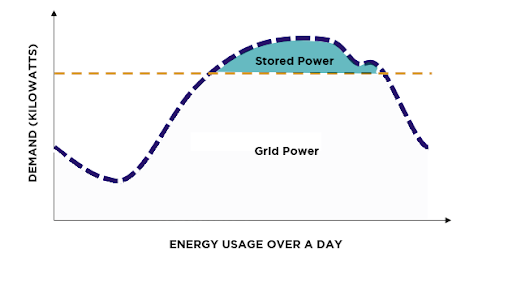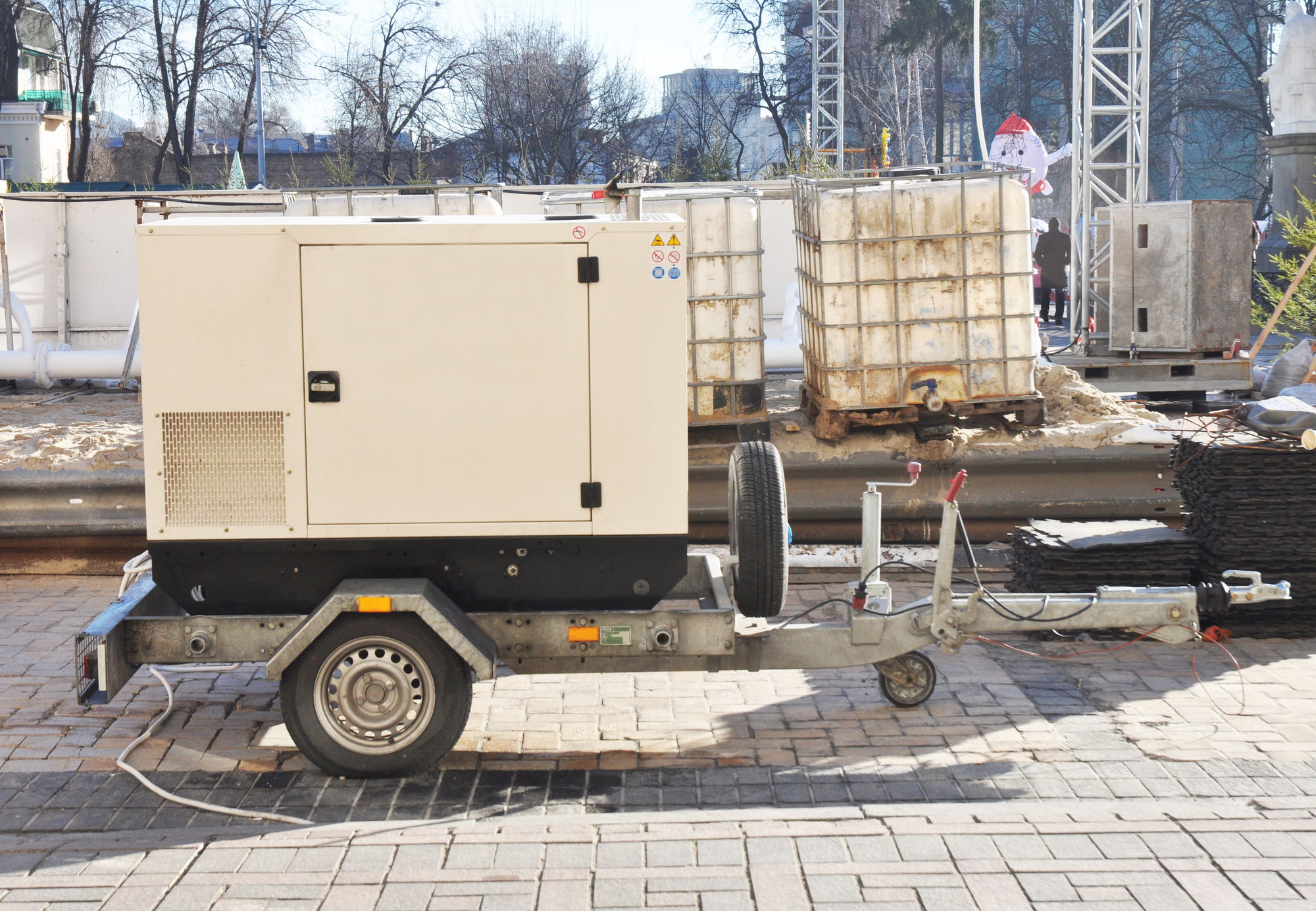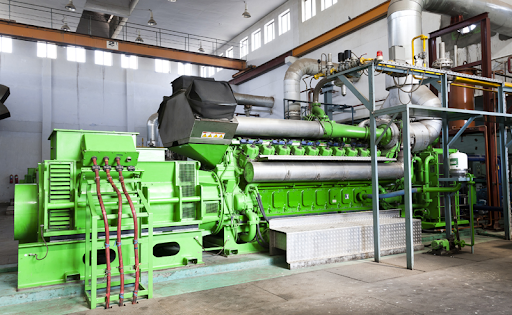Table of Contents
Introduction
Have you ever experienced a power outage or spike that disrupted your business operations? These unexpected events can cause significant damage to your business, from lost productivity to damaged equipment.
Fortunately, there is a solution that can help protect your business from such events: generator peak shaving.
Generator peak shaving is a strategy used to minimize a facility’s peak power consumption by avoiding peak demand charges and supplementing the electrical grid during periods of high demand with a backup generator. This strategy not only protects your business from power outages but also helps you save money on electricity.
In this in-depth article, we’ll look at what peak shaving is, how it works, and the benefits it may provide to your company.
What is Generator Peak Shaving?
Generator peak shaving can help reduce energy consumption at peak power usage for your business by using a backup generator to supplement the electrical grid during periods of high demand.
The generator is set to turn on automatically when the facility’s on-site energy supply or energy storage system reaches a certain threshold, lowering the amount of energy used from the electrical grid.
This technique is particularly effective for enterprises that have much higher power consumption during certain periods of the day or year, such as during inclement weather or peak business hours.
Businesses may save money by maximizing energy efficiency and minimizing pressure on the electrical system by lowering peak electricity consumption throughout.
In addition to being a more energy-efficient system during peak loads, peak shaving also offers several other benefits, such as improved power quality, reduced carbon emissions, and increased reliability. With these benefits in mind, let’s take a closer look at how generator peak shaving works.
How Does Generator Peak Shaving Work to Improve Energy Efficiency?
Generator peak shaving is more energy efficient and works by supplementing the electrical grid with a backup generator by quickly reducing power consumption during peak energy usage days. This technique helps reduce the facility’s peak load, which in turn reduces energy costs and the strain on the electrical grid.
Consider the following hypothetical scenario to better understand how generator peak load shaving works.
Assume you own a small restaurant that sees an increase in energy consumption during the lunch hour. The restaurant’s energy use may surpass its electrical capacity during this period, resulting in a power outage or surge.
To avoid this, you might supplement the electrical grid with a backup generator during the lunch rush. When the restaurant’s energy use reaches a certain threshold, the generator will automatically switch on, lowering the amount of electricity drawn from the electrical grid.

While this may appear straightforward in theory, there are various things to consider when adopting peak shaving. For example, the generator must be set to switch on and off at specified intervals to avoid running inefficiently and wasting fuel.
It’s important to keep in mind that the generator in use must be suitably designed to guarantee that it can manage the maximum peak load of the facility without causing harm to the electrical infrastructure or the equipment linked to it.
As a result, adopting generator peak shaving necessitates careful planning and the knowledge of a competent specialist. A generator specialist can assist you in determining the best size and location for your backup generator, as well as developing a tailored peak-shaving approach that matches your company’s specific demands.
Besides reducing energy costs and improving efficiency, generator peak shaving also offers several other benefits. For example, it can help improve power quality by reducing voltage fluctuations and power surges.
It can also help reduce carbon emissions by lowering the demand for energy from fossil-fuel power plants, as well as improve the reliability of your business operations by providing backup power during outages and spikes in grid demand.

Case Study: How Walmart Reduced Expenditure on Energy Usage with Generator Peak Shaving
One notable example of a corporation that has successfully implemented generator peak shaving is Walmart. To reduce expenditure on energy and improve sustainability, Walmart has installed generator peak-shaving systems at several of its stores and distribution centers.
According to a case study conducted by one of the most reliable renewable energy sources, National Renewable Energy Laboratory, Walmart was able to save millions of dollars per year in consumption charges by implementing generator peak shaving. By reducing their energy consumption during peak hours, Walmart was able to lower their demand charges and reduce their overall energy costs.
Apart from cost savings, Walmart’s generator peak shaving and power storage systems provided a dependable supply of backup power in the case of a power loss. This aided in ensuring company continuity and avoiding possible losses due to disrupted activities.
On the whole, Walmart’s success in deploying generator peak shaving shows the potential benefits of this technology for major organizations with significant energy use.

Common Mistakes to Avoid When Implementing Generator Peak Shaving
Implementing generator peak shaving can be a great way for businesses to reduce their energy costs and improve their bottom line. Even still, there are several frequent blunders that companies should avoid to ensure a successful deployment.
These are a few mistakes to avoid:
-
Underestimating Power Needs
Underestimating power demands is a typical error that businesses make when adopting generator peak shaving.
It is critical to ensure that the generator is suitably scaled to manage peak demand; otherwise, it may not be able to keep up during peak power consumption periods.
This might result in power outages and business interruptions, which can be costly in terms of lost productivity, utility costs, and income.
-
Lack of Proper Maintenance
Another blunder to avoid is failing to properly maintain the generator. Generators, like any other piece of equipment, require routine maintenance to perform properly and reliably.
Changing the oil and filters, checking the battery, and inspecting the fuel system are all examples of maintenance.
Failing to properly maintain the generator might result in costly repairs down the road, as well as a reduction in performance during high-demand periods.
-
Poor Planning and Installation
Proper planning and installation are also key to a successful generator peak-shaving implementation.
This includes things like ensuring that the generator is located in a well-ventilated area, that there is adequate space around the generator, and that it is safely and properly linked to the electrical system.
Improper planning and implementation can result in dangerous situations, poor performance, and costly maintenance.
-
Inadequate Training and Education
Utility companies can take it a step further by making certain that their employees are adequately taught and informed on how to utilize and maintain the generator.
Just a few examples of this are understanding the control panel of the generator, knowing how to start and stop the generator, and knowing how to monitor the generator’s performance. Insufficient training and instruction can result in safety risks, poor performance, and expensive repairs.
Businesses may ensure a successful adoption of generator peak shaving and reap the cost savings and other benefits by avoiding these typical blunders.
Wrapping Up
Businesses can cut their peak demand charges and enhance their bottom line while also supporting environmental goals by limiting energy use during peak hours.
Generator peak shaving can help you reach your energy objectives and improve your operations, whether you operate a small business or a huge multinational. As demonstrated by Walmart, generator peak shaving may result in considerable cost savings and improved business continuity.
So if you’re looking to reduce your electricity usage costs and ensure reliable backup power, you definitely might want to consider implementing a generator peak-shaving system. With the right technology and expertise, you can harness the power of generator peak shaving and take your business to the next level.
If you have any questions or need help getting started with generator peak shaving, be sure to reach out to a qualified energy expert for guidance. Contact Swift Equipment today, and let us help you power your success.
FAQs about Generator Peak Shaving
-
What are the benefits of generator peak shaving?
Generator peak shaving offers several benefits, including reduced energy costs, improved efficiency, and improved power quality. It can also help reduce carbon emissions and improve the reliability of your business operations.
-
What kind of businesses can benefit from generator peak shaving?
Any business that experiences a surge in energy demand during peak periods can benefit from generator peak shaving. This includes restaurants, supermarkets, data centers, manufacturing, electricity storage facilities, and more.
-
How do you determine the right size of generator for peak shaving?
Determining the right size of generator for your peak usage shaving requires careful analysis of the facility’s energy usage patterns and peak demand. A qualified generator expert can help you determine the optimal size of the generator for your facility.
-
Can generator peak shaving be used for residential applications?
Yes, generator peak shaving can be used for residential applications, but it is typically more common in commercial and industrial settings.
-
Is generator peak shaving expensive to implement?
The cost of implementing generator peak shaving varies depending on the size and complexity of the system. However, in most cases, the cost of implementation is outweighed by the long-term savings and benefits.
-
How do you maintain a generator used for peak shaving?
A generator used for peak shaving requires regular maintenance to ensure optimal performance and reliability. This includes regular oil changes, filter replacements, and inspection of critical components. A qualified generator expert can help you develop a maintenance schedule that meets the specific needs of your generator.




Leave A Comment